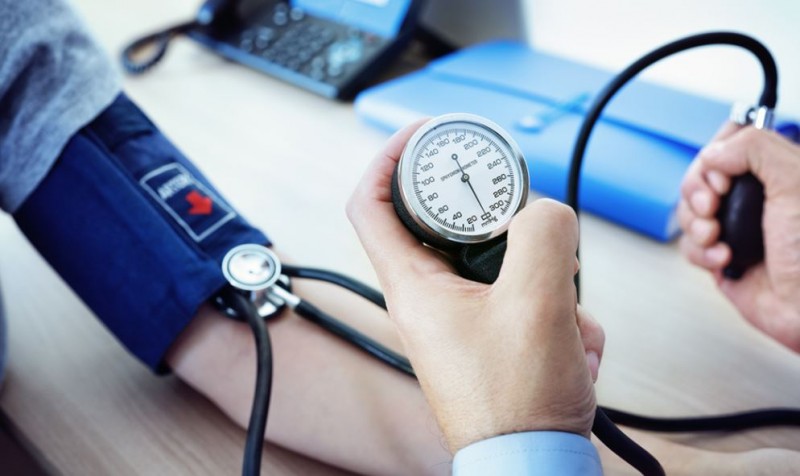
Maintaining a healthy blood pressure is essential for overall well-being. High blood pressure, also known as hypertension, can increase the risk of heart disease, stroke, and other serious health issues. While medication can be necessary, incorporating regular exercise into your routine can play a significant role in managing and lowering your blood pressure. Let's explore a variety of powerful exercises that can help you achieve this goal.
Before we delve into the exercises, let's briefly understand what blood pressure is. Blood pressure is the force of blood against the walls of your arteries. It is measured in millimeters of mercury (mmHg) and is recorded as two numbers: systolic pressure (the higher number) and diastolic pressure (the lower number). A normal blood pressure reading is usually around 120/80 mmHg.
Regular physical activity offers a multitude of benefits for your cardiovascular health, including helping to lower blood pressure. Exercise helps improve the efficiency of your heart, making it easier to pump blood, and also promotes better blood vessel function. Additionally, it can aid in weight management, reduce stress, and enhance overall well-being.
Aerobic exercises are fantastic for improving cardiovascular health and lowering blood pressure. These exercises get your heart pumping and increase your breathing rate. Examples of effective aerobic exercises include:
Brisk walking is a simple yet powerful way to improve your cardiovascular fitness. Aim for at least 30 minutes of brisk walking most days of the week. You can break it up into shorter sessions if needed.
Cycling, whether outdoors or on a stationary bike, is gentle on the joints and great for your heart. It's an excellent option for people of all fitness levels.
Swimming is a full-body workout that not only helps lower blood pressure but also provides a refreshing way to stay active. The water's buoyancy reduces impact on your joints.
Strength training involves working your muscles against resistance, which can be weights, resistance bands, or even your body weight. This type of exercise offers a different set of benefits for blood pressure management:
Lifting weights a few times a week can help increase muscle mass and improve metabolism. As your muscles become stronger, they can help improve blood vessel function, indirectly contributing to better blood pressure.
Exercises like push-ups, squats, and lunges use your own body weight to provide resistance. These exercises not only strengthen muscles but also engage your cardiovascular system.
Yoga is renowned for its stress-reducing benefits, and reducing stress can contribute to lowering blood pressure. Certain yoga poses, breathing exercises, and meditation techniques can be particularly effective:
Savasana, or the corpse pose, is a relaxation pose that promotes deep rest. It can help reduce stress and promote a sense of calm, which in turn supports healthy blood pressure levels.
Deep breathing exercises, such as pranayama, can have a calming effect on your nervous system. This can help lower stress hormones that contribute to high blood pressure.
High-Intensity Interval Training (HIIT) involves alternating between short bursts of intense exercise and periods of rest. This type of workout can improve cardiovascular fitness and blood vessel function:
Sprinting, whether on a track or a stationary bike, can provide an effective HIIT workout. It challenges your cardiovascular system and encourages the dilation of blood vessels.
Jumping rope in intervals gets your heart rate up and improves coordination. It's an accessible and effective way to engage in HIIT.
Incorporating mindfulness and meditation into your routine can contribute to blood pressure management by reducing stress and promoting relaxation:
During your walks, practice mindful walking by focusing on your breath and the sensations in your body. This helps redirect your thoughts away from stressors.
Guided meditation sessions, even for a few minutes a day, can have a positive impact on your stress levels, indirectly benefiting your blood pressure.
Flexibility exercises, such as stretching and yoga, promote relaxation and can indirectly contribute to lowering blood pressure:
Perform static stretches to improve flexibility and release tension in your muscles. This can help alleviate stress and reduce blood pressure.
Tai Chi combines gentle movements and deep breathing. It's a low-impact exercise that enhances flexibility, balance, and overall relaxation.
Incorporating a variety of exercises into your routine can lead to a significant improvement in blood pressure levels. Remember to start gradually, especially if you're new to exercise, and consult your healthcare provider before making any major changes to your routine, especially if you have existing medical conditions. By committing to regular physical activity, you're taking an important step toward maintaining a healthy blood pressure and promoting your overall well-being.